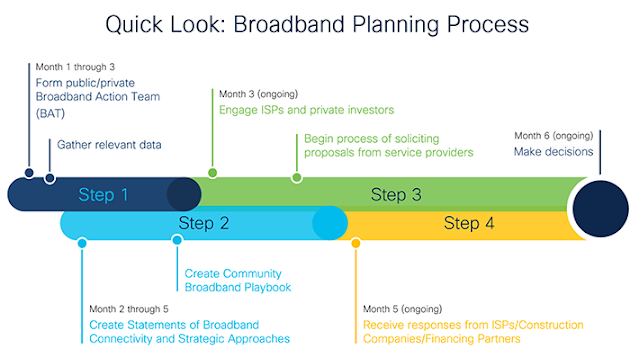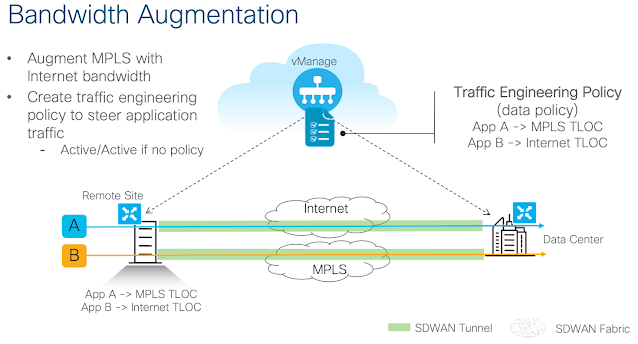Wednesday, 21 August 2024
The AI Revolution: Transforming Technology and Reshaping Cybersecurity
Thursday, 6 June 2024
Funding a Whole of State Approach for your Community
1. Understanding SLCGP funding
2. States select the vendors and cybersecurity services provided to local governments
3. Customer Cybersecurity Planning and Strategy
4. Compliance and Best Practices
5. Educational and Workforce Development
Tuesday, 4 June 2024
Cisco Defense Orchestrator’s Path to FedRAMP Authorization
Cisco Defense Orchestrator is a cloud-based multi-device manager that enables consistent policy implementation across highly distributed environments. CDO’s centralized management allows rapid deployment of policy changes when minutes matter, and reusing policy objects across all firewall form factors reduces both administrative effort and organizational risk. Security teams that adopt CDO spend less time deploying and maintaining their firewalls and more time optimizing policies and managing threats.
Moving forward on FedRAMP
Cisco has made great progress in moving a variety of our solutions through the FedRAMP process. Created to encourage use of cloud computing, FedRAMP serves to streamline the exchange of information and accelerate services within federal agencies, plus improve their interaction with the public. In 2023, the FedRAMP Authorization Act was passed, codifying the FedRAMP program as the authoritative standardized approach to security assessment and authorization for cloud products and offerings.
With FedRAMP, federal agencies are provided a uniform framework for evaluating, approving, and continually overseeing cloud services. This includes procedures for security assessments, authorizations, and ongoing surveillance of cloud services utilized by federal entities. In addition, you should understand the following:
- The US General Services Administration (GSA) administers FedRAMP in collaboration with the Department of Homeland Security (DHS) and the Department of Defense (DoD).
- The compliance parameters set by FedRAMP are in alignment with the National Institute of Standards and Technology (NIST) Special Publication 800-53, which outlines technical standards for cloud computing.
- FedRAMP also promotes adherence to the Federal Information Security Management Act (FISMA) and the OMB Circular A-130 by federal agencies.
The FedRAMP process and Cisco Defense Orchestrator
FedRAMP Authorization can be pursued with an individual agency sponsor or multi-agency authorization. For CDO, Cisco is working with the United States National Institute of Health (NIH) as the individual agency sponsor.
Preparation Phase
The initial phase with individual agency sponsorship is known as the Preparation Phase. It consists of two key steps if no sponsor agency is available: conducting a Readiness Assessment and engaging in Pre-Authorization activities.
Preparation Step 1: Readiness Assessment
The Readiness Assessment is an optional stage aimed at helping cloud offerings obtain a sponsor. Readiness assessments are performed by certified Third-Party Assessment Organizations (3PAOs), who produce a Readiness Assessment Report (RAR) that shows potential sponsoring agencies that the solution is ready to meet the federal government’s security standards.
- Demonstrated that the CDO for government solution is fully built and functional.
- Completed a CSP Information Form.
- Determined the security categorization of the data that will be placed within the system utilizing the FIPS 199 categorization template along with the appropriate guidance of FIPS 199 and NIST Special Publication 800-60 Volume 2 Revision 1 to correctly categorize the CDO system based on the types of information processed, stored, and transmitted.
Leveraging the Cisco Federal Ops Stack
Pushing forward on CDO FedRAMP compliance
Saturday, 6 January 2024
Synchronizing Technology and Organizational Culture for Optimal Outcomes
Understanding the Challenge of Martec’s Law and Strategically Adopting Technology
Effective Application of Martec’s Law to Enhance Organizational Outcomes
Leveraging Cisco’s Insights and Best Practices
Orchestrating Technological and Cultural Change: A Customer Success Focus
Addressing Current (and Future) Federal Mandates with an Integrated Multi-Architecture Approach
Conclusion: Seizing the Opportunity to Shape the Future
In a Nutshell
Thursday, 21 July 2022
Enhancing Government Outcomes with Integrated Private 5G
Enhancing Government Outcomes with Integrated Private 5G
Private 5G is now ready to be part of your enterprise wireless communications transformation strategy. While there has been extensive focus on ultra-wideband gigabit speeds from public Mobile Network Operators, there are even greater government expectations for 5G capabilities to assure the quality of service and empower new mission-critical use cases. 3GPP standards are enabling delivery of capabilities in three strategic 5G areas: enhanced Mobile Broadband (eMBB), Ultra-Reliable and Low Latency Communications (URLLC), and massive Machine Type Communications (mMTC). Private 5G is uniquely capable of addressing critical communications requiring interference-free spectrum, high throughput and/or low latency deterministic data delivery, and the ability to transfer terabytes of data without a metered service plan. The result will be a wide range of advanced public and private network wireless capabilities for high-definition video, advanced command and control, autonomous vehicles, and addressing previously overwhelming quantities of sensor data.
Private 5G Fundamentals
Cisco’s Private 5G solution is built on service provider class technology, tailored and optimized for enterprise consumption. For decades, Cisco has powered cellular networks around the world through advanced IP transport and 3GPP standards-based components, including our industry-leading Mobile Packet Core. Our new Private 5G solution delivers Wi-Fi-like simplicity through a cloud-native platform built on a services-based architecture and micro-services infrastructure. The solution offers a zero-touch delivery approach to on-premises elements that provide wireless connectivity between user devices and applications, while ensuring organizational and local data sovereignty. Cisco’s proven IoT platform manages the on-premises elements allowing for rapid turn-up and delivery of services, reducing government 5G learning curves and on-boarding burdens.
Better Together – An Enterprise Wireless Approach
An integrated private wireless strategy for Private 5G and Wi-Fi6 working together can deliver near-term transformative innovation as well as optimal user experiences and new mission-critical capabilities for the next generation of government mobility.
Better Together Outcomes – Optimized Experience / Minimized Costs
Key Zero Trust and Security Considerations
Tuesday, 24 May 2022
Broadband Planning: Who Should Lead, and How?
As new Federal funding is released to help communities bridge the digital divide, you’ll need to gain a strong understanding of the solutions and deployment options available. Often overlooked, however, is the need to develop and commit to a realistic and inclusive broadband planning process. One that acknowledges the broad variety of stakeholders you’ll encounter and offers a realistic timeline to meet funding mandates. You’ll also need a strong leader. But who should lead and what should the process look like?
Why broadband planning is critical
As a licensed Landscape Architect and environmental planner, I’ve had the opportunity to work with state and local government leaders on a variety of infrastructure projects. In each case, we created and adhered to a detailed planning process. The projects ranged from a few acres to 23,000 acres, from roadways and utilities to commercial and residential communities. Even campuses and parks. In each case, sticking to a detailed planning process made things go smoother, resulting in a more successful project.
As critical infrastructure, broadband projects should adopt the same approach. You’ll benefit greatly by leveraging a well thought out collaborative planning model. Your stress levels will be reduced, your stakeholders happier, and the outcome more resilient and sustainable.Using a collaborative planning model helps accomplish this by:
◉ Establishing a clear vision and goals
◉ Limiting the scope of the project, preventing “scope-creep”
◉ Creating dedicated milestones to keep you on track
◉ Providing transparency for all stakeholders
◉ Setting a realistic timeline to better plan and promote your project.
Using a collaborative broadband planning process also creates a reference source for media outreach and promotion as milestones are reached. Lastly, by having a recorded process, funding mandates or data reporting can be more easily reported, keeping you and your team in compliance.
Who should lead broadband planning?
My involvement in traditional infrastructure planning has allowed me to experience first-hand how comfortable government personnel are in leading large-scale projects. Why are they? Because:
◉ They’re well versed in local ordinances, regulatory laws, and community standards
◉ They understand their community and its people
◉ They have established relationships that cross the public and private sector.
That’s why I, and many others in the IT industry, feel these same state and local government leaders can offer the most success leading broadband planning in their communities.
In addition, those in planning-specific positions are especially suited to do so, having unique skill sets that address:
◉ What type of infrastructure is needed and where to locate it
◉ Gathering realistic data via surveys, GIS mapping, and canvassing
◉ Construction issues that may serve as potential roadblocks or opportunities
◉ Understanding potential legal and maintenance issues.
A realistic broadband planning process
To help our partners in the public and private sectors achieve greater success in their broadband efforts, we’ve created a new guide. It outlines a realistic, inclusive broadband planning process, including suggested timelines and milestones.
Funding for broadband
Tuesday, 8 March 2022
EIS in Transition: Impacts on Digital Transformation for Federal Networks
For Federal agencies, Enterprise Infrastructure Solutions (EIS) has provided a comprehensive, solution-based method to address their IT telecommunications and infrastructure needs. Over the years, EIS has seen many changes that directly impact stakeholders. But its primary purpose as a key driver for the digital transformation of enterprise telecommunications and networking solutions remains unchanged. Yet many agencies, such as Networx and WITs, face contract expirations on May 31, 2023. To maintain momentum for digitization, Federal agencies must begin the transition now by strategically mapping how and where it should start.
What’s next for Federal Digital Transformation?
For decades, Cisco has built a strong relationship with the U.S. Federal Government. Our portfolio of products, solutions, and services provide Federal agencies with the critical technology and support they need to enable the transformation of their networks within the EIS contract.
By leveraging these existing contracts, agencies are reducing costs and acquisition time. They’ve been able to digitize aging systems and catch-up to the private sector in capabilities. But now what? Which direction should Federal agencies go as they transition contracts within EIS? The simple answer: Cisco SD-WAN.
Beyond EIS with SD-WAN
Cisco SD-WAN is the premier choice for replacing expensive and aging legacy WAN. Federal agency networks leveraging Cisco’s SD-WAN solution can benefit from:
◉ Enhanced user experience
◉ Reduced costs
◉ Simplified operations
◉ Improved performance
◉ And robust security.
Cisco SD-WAN enables more efficient bandwidth allocation, powering critical applications to faster, smoother performance. This capability is now a necessity as Federal agencies move to cloud services and witness an explosion of app-wielding users connecting remotely.






















